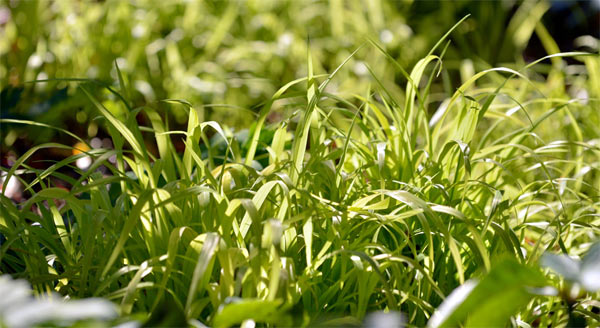Big Looks, Little Fuss
This article was first published on 08 May 2014.

Milium effusum 'Aureum'
Bowles’s golden grass is growing very successfully in the shady borders of the lower botanic garden camellia collection. It’s planted in several informal drifts and there are a lot of reasons to recommend this humble grass.
Firstly, it's beautiful. The leaf blades of Bowles's golden grass, or Milium effusum 'Aureum' are bright golden-yellow. The intensity of the colour contrasts perfectly with the dark glossy greens of the camellias. The roughly 30cm high grass is a graceful clump of gently arching leaves. In the summer it produces tiny flowers on branching stems in a lemony spray above the foliage. Right now, the bright foliage is a welcome contrast to the darker browns of autumn leaves and wet soil.
Secondly, this grass is low maintenance. When the leaves start to look untidy or dull, cut them off with a pair of shears and it regrows like a fresh lawn. Seed can be broadcast where wanted and seedlings are easy to transplant. The clump can also be successfully lifted and divided. Milium is a woodland grass which looks best in the shade where it will grow in damp or dry conditions.
Thirdly, Milium effusum 'Aureum' comes true from seed. Despite being a variation of the species, Bowles’s golden grass always comes true from seed. This is unusual for a plant variation. Cultivars and variations commonly revert back to their original species when grown from seed and need to be propagated through cuttings, divisions or other asexual methods to remain true.


